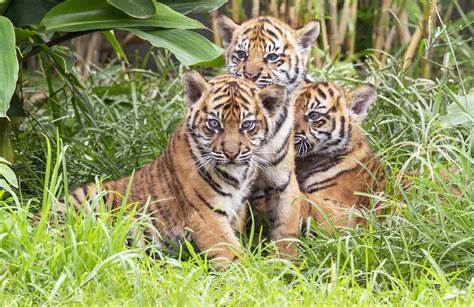The tiger (Panthera tigris) is not just a majestic creature; it embodies strength, wild nature, and cultural significance across civilizations. Revered from the monasteries of Bhutan to global fashion runways, this powerful predator is a vital part of our world’s ecological and cultural fabric.
However, tigers are now teetering on the edge of extinction. A century ago, over 100,000 wild tigers roamed Asia, but today, only around 5,600 remain in a fraction of their historical range. India, home to half of these remaining tigers, plays a crucial role in their conservation, though the decline has been steep, particularly in the last decade.
Why Tigers Matter
Tigers are more than just a symbol; they are keystone species that play a critical role in maintaining the balance of ecosystems. Inhabiting diverse landscapes like rainforests, grasslands, and mangroves, they help regulate herbivore populations, preventing overgrazing and the degradation of their habitats. Their presence supports ecosystems that provide essential resources like water, clean air, and food, which are crucial for both nature and people.
Moreover, tigers contribute to local economies through tourism, bringing much-needed income to rural communities. Conservation projects not only protect tigers but also provide alternative livelihoods, reducing dependence on activities that threaten these big cats.
The Threats Tigers Face
The most immediate threat to tigers is poaching, driven by the demand for tiger parts in traditional medicine and as status symbols. Additionally, tigers have lost 95% of their historic range due to human activities like deforestation and development. As their habitats shrink, tigers are forced into closer contact with humans, leading to conflicts that often result in the killing or capture of these “conflict tigers.”
Conservation Efforts by WWF-Canada
WWF-Canada is at the forefront of efforts to reduce human-tiger conflict, improve tiger habitats, and combat poaching and wildlife crime. Through partnerships with organizations like TRAFFIC, WWF works to dismantle the illegal trade in tiger products and reduce demand.
One of the most significant conservation initiatives is TX2, launched at the 2010 Global Tiger Summit. This ambitious goal aimed to double the number of wild tigers by 2022. With global efforts, including those by WWF-Nepal, the wild tiger population has increased for the first time in over a century, with Nepal more than doubling its tiger numbers. However, the work is far from over, and continued efforts are needed to ensure the survival of tigers.
India’s Role in Tiger Conservation
India is a critical player in global tiger conservation, housing around 70% of the world’s tiger population. Thanks to concerted efforts by the government and conservationists, India’s tiger population has seen a significant increase, rising to 2,967 according to the 2018-19 census. This success is attributed to initiatives like Project Tiger, which started in 1973 and has expanded to cover 50 tiger reserves across the country.
Challenges and the Future
Despite these successes, challenges remain. Tigers continue to face threats from habitat loss, poaching, and human-wildlife conflict. However, India’s commitment to conservation, exemplified by its substantial investments in tiger protection, offers hope for the future.
As we look to the next 12 years of tiger conservation, it is crucial to build on this momentum, ensuring that tiger landscapes are protected and that local communities are involved in conservation efforts. By doing so, we can secure a future for tigers and the ecosystems they support, benefiting both wildlife and people.

